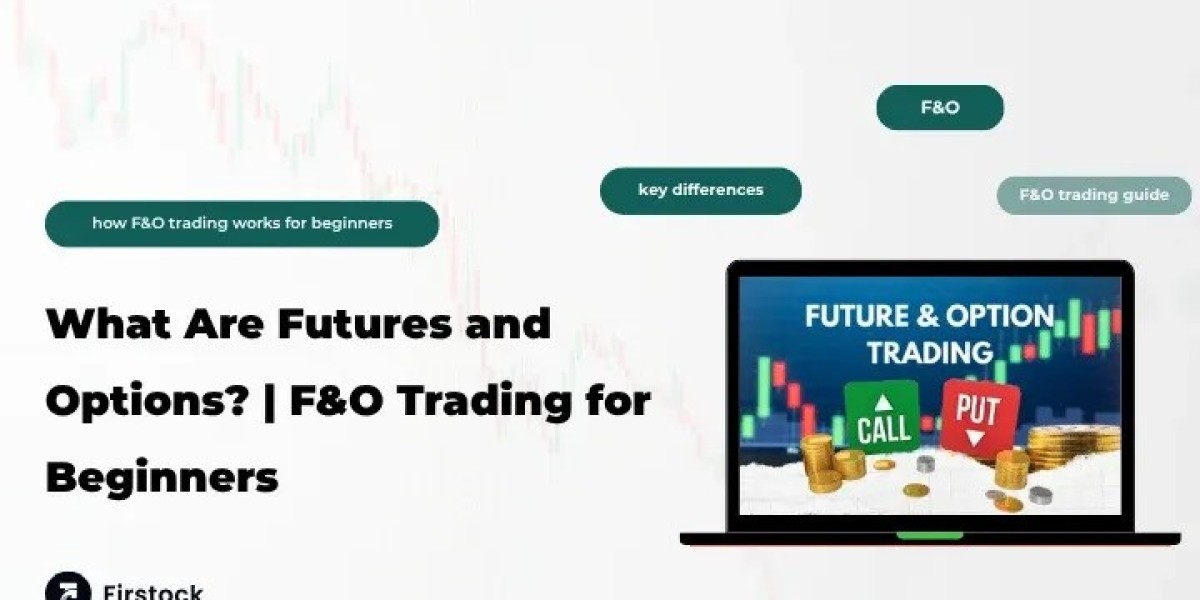Futures and Options Trading for Beginners: A Complete Guide
Introduction
Have you ever wondered how traders make money even when markets fall? Or how investors manage risk and hedge their positions? Welcome to the world of futures and options trading—a powerful part of the stock market that gives you more control, flexibility, and opportunities.
If you’re new to this, don’t worry. Think of this article as your roadmap to understanding futures and options trading for beginners—explained in simple language without the complicated jargon. By the end, you’ll not only know what futures and options are, but also how to trade them confidently using a trading app in India.
Learn about futures and options trading for beginners, futures and options trading meaning, what are futures and options trading, and the best trading app in India.
What Are Futures and Options Trading?
Futures and options trading is a form of derivative trading—where you don’t directly buy or sell stocks, but rather, trade contracts based on the future price movements of those stocks or indices.
In simpler terms, you’re predicting what will happen to the price of a stock in the future and making your trade accordingly.
Imagine booking a movie ticket in advance. You lock in the price today, even though the movie will release later. That’s somewhat how futures and options trading works—you lock in a deal today for a transaction that will happen in the future.
Understanding the Meaning of Futures and Options
Futures
A futures contract is an agreement to buy or sell an asset (like a stock or index) at a predetermined price on a specific future date.
Both buyer and seller are obligated to fulfill the contract when the date arrives.
Options
An options contract gives the right, but not the obligation, to buy or sell an asset at a set price within a given period.
This flexibility is why many beginners prefer options trading—you can choose to walk away if things don’t go your way.
Key Differences Between Futures and Options
Feature | Futures | Options |
Obligation | Both buyer and seller are obligated | Buyer has the right, not obligation |
Risk | Higher, as losses can be unlimited | Limited to premium paid |
Cost | Requires margin deposit | Requires option premium |
Flexibility | Fixed contract | Can choose to exercise or not |
Why Futures and Options Trading Is Popular in India
India’s stock market has grown rapidly, and futures and options (F&O) have become one of the most traded segments on exchanges like NSE and BSE.
The reasons are simple:
- Low investment, high potential returns
- Ability to profit in both rising and falling markets
- Efficient risk management for portfolio investors
Even beginners, with guidance and practice, can use trading apps in India to learn and trade easily.
How Futures Trading Works
Let’s break it down:
Suppose you believe the price of Reliance Industries will rise from ₹2,400 to ₹2,500 in a month. You buy a futures contract at ₹2,400.
If the price indeed rises, you make a profit. But if it falls, you bear a loss.
The entire concept revolves around anticipating future prices—similar to predicting the weather, but with data, charts, and market analysis!
How Options Trading Works
Options trading is like buying insurance for your trades. You pay a premium to gain the right to buy or sell an asset.
For example:
- You buy a call option if you expect the price to rise.
- You buy a put option if you expect the price to fall.
If your prediction is correct, you make a profit. If not, your loss is limited to the premium amount—just like how an insurance premium works.
Types of Options: Calls and Puts
Call Option
A call option gives you the right to buy an asset at a specific price within a set period.
Example: You buy a call option on Infosys at ₹1,500. If the stock rises to ₹1,600, you earn a profit.
Put Option
A put option gives you the right to sell an asset at a specific price.
Example: You buy a put option at ₹1,500. If the price drops to ₹1,400, you make a profit.
Important Terms Every Beginner Should Know
Before trading, you must understand some key terms:
- Strike Price – The price at which you can buy/sell the asset.
- Premium – The cost of purchasing an option.
- Expiry Date – The date when the contract ends.
- Lot Size – The number of shares per contract.
- Margin – The money you must deposit to trade futures.
Understanding these terms helps you navigate futures and options trading for beginners more confidently.
How to Start Futures and Options Trading in India
Here’s a step-by-step guide for beginners:
- Choose a trusted trading app in India
- Open a Demat and trading account
- Complete KYC verification
- Understand the risks and trading strategies
- Start small and practice using demo accounts
- Track market trends and news
- Execute your first F&O trade
Choosing the Best Trading App in India
Your trading experience depends heavily on the app you choose.
Look for these features in a trading app in India:
- Low brokerage and transparent pricing
- Fast order execution
- Live charts and data
- Educational tools for beginners
- Reliable customer support
Top apps in India provide beginner-friendly interfaces, tutorials, and analysis tools to make futures and options trading accessible for everyone.
Benefits of Futures and Options Trading
- Leverage: Control large positions with smaller capital.
- Hedging: Protect your portfolio against market volatility.
- Profit in any market: Whether prices rise or fall, opportunities exist.
- Liquidity: High trading volumes ensure easy entry and exit.
- Diversification: Access to stocks, indices, commodities, and more.
Common Mistakes Beginners Should Avoid
Even seasoned traders make errors. Avoid these common pitfalls:
- Trading without a strategy
- Ignoring stop-loss orders
- Over-leveraging positions
- Letting emotions control decisions
- Not learning the basics
Remember, trading is more about discipline than prediction.
Futures and Options Trading Strategies for Beginners
Here are some simple yet effective strategies:
a. Covered Call
Own the stock and sell a call option to earn premium income.
b. Protective Put
Buy a put option to protect your stock from falling prices.
c. Straddle
Buy both call and put options to profit from volatility, regardless of direction.
d. Spread Strategy
Buy one option and sell another of the same type to minimize risk and cost.
These strategies help you build confidence as you explore what are futures and options trading in real-world scenarios.
Risk Management in F&O Trading
Trading is exciting, but managing risk is crucial. Here’s how you can protect yourself:
- Use stop-loss orders to limit losses.
- Avoid investing all your money in one trade.
- Keep emotions in check.
- Monitor markets regularly.
- Learn continuously through simulation and analysis.
A smart trader isn’t just one who profits—but one who knows how to protect those profits.
Conclusion and Final Thoughts
Understanding futures and options trading for beginners is like learning to drive—you start slow, understand the controls, and gradually build speed.
By now, you know what are futures and options, how they work, their meaning, and how to start trading safely using the best trading app in India.
Remember, success in trading isn’t about luck—it’s about learning, discipline, and consistency. Start small, stay informed, and trade wisely!
FAQs
1. What are futures and options trading?
Futures and options trading involves buying and selling contracts based on the expected price movement of stocks, indices, or commodities in the future.
2. Is futures and options trading good for beginners?
Yes, beginners can start trading with proper education, small capital, and practice using demo accounts before investing real money.
3. How much money do I need to start F&O trading in India?
You can start with as little as ₹5,000–₹10,000, depending on the margin requirements set by your broker.
4. Which is the best trading app in India for F&O?
Choose a trading app in India that offers low fees, real-time data, and beginner-friendly tutorials to help you learn efficiently.
5. What are the risks involved in futures and options trading?
F&O trading involves risks like market volatility, leverage losses, and emotional trading. Always manage risks and trade responsibly.



